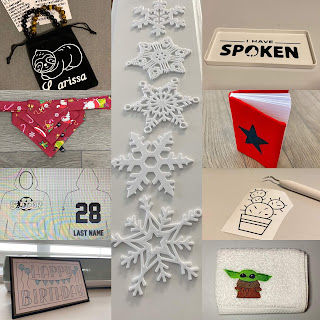This article is brought to you by Lizzsews.
This article series consists of my makes from 3D printing, Cricut, sewing and embroidery! Follow along to see all the different things that I make and projects that I do.
Articles in this series:
- Making the winter soldier book (sewing)
- How I made article 1 (Cricut, pouch + info cards)
- How I made article 2 (Cricut, birthday card)
- How I made article 3 (Cricut, soap tray)
- How I made article 4 (Cricut, notepad cover)
- How I made article 5 TBA
- How I made article 6 (Cricut, phone stand)
- How I made article 7 (Cricut, volleyball blanket)
- How I made article 8 (Cricut, compost bin)
- How I made article 9 (Cricut, birthday card)
- How I made article 10 (3D print, AirPods case)
- How I made article 11 (Sewing, stocking)
- How I made article 12 (Cricut, little lad socks)
- How I made article 13 (3D print, Mythosaur)
- How I made article 14 (3D print, impROCKster)
- How I made article 15 (sewing, tri tray)
- How I made article 16 (Cricut, ski hoodie)
- How I made article 17 (Cricut, deer coaster)
- How I made article 18 (Cricut, ski coaster)
- How I made article 19 (3D print, robot holding heart)
- How I made article 20 (Cricut, bear mug -no mug press)
- How I made article 21 (Embroidery, dance towel)
- How I made article 22 (Cricut, Butterfly coaster)
- How I made article 23 (Cricut, Yippee yappee shirts)

Comments
Post a Comment